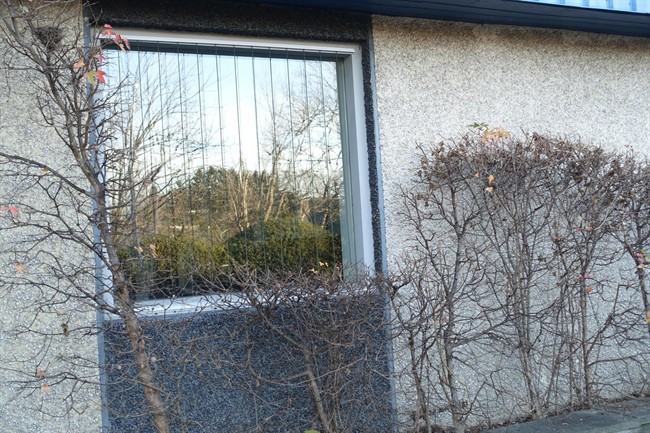With a house close to the Eastern Pennsylvania woods — and the wildlife that lives there — Jeff Acopian wrestled with a problem that afflicts homeowners around the country.

“Birds were hitting our windows and dying,” the Easton resident says. “And we didn’t like it.”
An engineer by profession and a naturalist at heart, Acopian came up with a solution: Acopian BirdSavers, a fixture that involves dangling pieces of parachute cord in front of windows to keep birds from flying into them.
“It sounds pretty bad when you tell someone to hang strings on their front window,” says Acopian, who nixed his original remedy, hanging strings of beads, because it made his house look like “a hippie pad.”
“But when people actually see it, it is not objectionable at all,” he says.
BirdSavers is one of a growing number of options available for folks who want to keep birds from crashing into their windows but don’t want to hurt their home’s curb appeal in the process.
Christine Sheppard, who runs the bird collisions campaign for the American Bird Conservancy, cites a range of relatively simple ready-made products — BirdSavers, window tape and external screens among them — as well as DIY fixes like washable window paint or hanging branches in front of windows, that are effective enough while also being subtle.
“You can reduce collisions without making your house ridiculous,” Sheppard says.
While bird collisions are hardly new, she says, the magnitude of the problem is increasing, largely due to more widespread urbanization and a trend toward larger panes of glass in both residential and high-rise construction.
Birds are either fooled by the transparency of the glass, or believe the reflections they see in them — trees, shrubs and the like — are real, and die trying to reach them, she says.
Window collisions kill hundreds of millions of birds each year, making them, with cats, one of the two leading human-related causes of bird mortality. Conservationists say the number of birds killed by collisions and cats will soon rise to 1 billion per year.
But Joanna Eckles, the National Audubon Society’s bird-friendly communities manager, says individuals can easily reduce those numbers simply by putting some visual barrier on the exterior of the windows that birds are drawn to.
“The big thing that people need to get is that this isn’t something that has to happen,” she says. “This is preventable.”
That prevention, she says, could take a range of shapes.
The American Bird Conservancy’s Bird Tape, available at abcbirdtape.org, is translucent and can be used to design patterns on windows. Bird screen, available at birdscreen.com, creates a barrier between birds and windowpanes. CollidEscape, available at collidescape.org, is a film that you put on outside windowpanes to reduce reflection.
The options are infinite for do-it-yourselfers, Eckles says. With washable paint, you can use stencils or let the kids create holiday decorations. Hanging virtually anything easy on the eyes — ribbons, delicate branches, strings — in front of windows will do the trick. So will the unobtrusive netting that’s used to protect fruit trees.
Not every window needs to be made bird-safe, nor do all windows need the same remedy. It’s up to homeowners to decide, based on which windows attract birds, and at what time of day or year.
“There are a million ways people have handled this in beautiful ways,” Eckles says. “You are only restricted by your own rules.”
Sheppard agrees. “No one should feel constricted with what they use.”
“Most conservation stories just make you depressed, feeling like there is little you can do about it besides giving money,” Sheppard says. “But in this case, you can actually do something.”

Comments